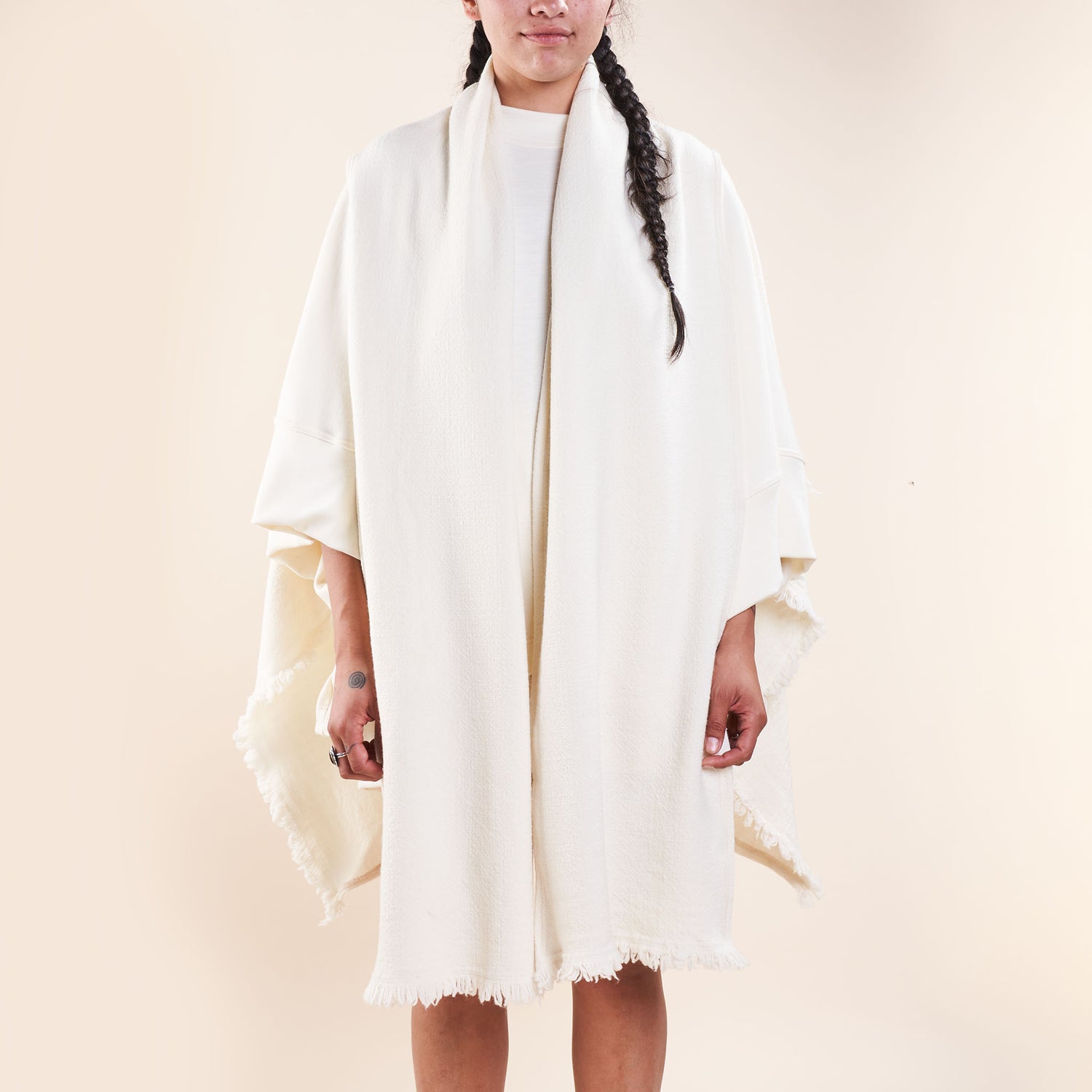Fabric Care

Every material is unique, and as such each requires a special type of care for longevity and optimal performance. To give your clothing the longest life possible, please review the following guidelines.
STORAGE:
For most clothes, we recommend storing on hangers (or laid flat if you have that luxury of space). Heavy items, like chunky knits for example, should be either laid flat or folded so as not to become stretched over time. This is especially true for alpaca wool garments. For pants, hangers with waist clips are optimum, as they won't form a crease at the knees and will therefore maintain the structure of the garment over a longer period.
CLEANING:
Most people wash their clothes too often. One of the quickest ways to degrade a piece of fabric is to run it through a washing machine and dryer. Instead, we recommend not washing items until they're actually dirty or have an undesirable odor, and using a clothing brush to take care of everyday dirt. When they're ready for a proper washing, soapberries are an amazing and effective detergent that has no negative environmental impact other than the energy expended in getting them to you. All clothing sold at Housework is safe to wash with soapberries, including both plant and animal fibers, and naturally dyed clothing. Ideally, always hang dry or flat dry garments to save energy and retain fabric quality.
We recommend against using chemical fabric softeners, both because they're incredibly toxic and many of them contain pH adjusters which can react to natural dyes. Wool dryer balls are an effective natural fabric softener that have the side benefit of reducing drying time, as well.
Heavier weight items such as those made with denim and canvas don't take well to machine washing and generally fare better with a regular brushing off and a very occasional wash in a lukewarm tub. When you do wash your denim and canvas items, be sure to hang dry.
NATURAL DYES:
All of our naturally dyed pieces are dyed with either plants or minerals or a combination of the two, and as such may behave slightly differently from synthetic dyes when it comes to care instructions.
Some pieces (generally just those dyed with indigo or iron) may have a break-in period where you will experience dye transfer, or crocking. Most will not experience any crocking at all. Always test new garments by wiping them with a dry white cloth. If it becomes colored, we recommend wearing the garment exclusively with similar colors and generally being mindful of fabrics it may come into contact with for the first week or two. Test similarly until no dye transfer is observed. Because of the handmade nature of all of our clothing items, this period may vary in length.
All colors fade, but natural dyes fade in an organic and beautiful way. It isn't something you notice day by day, but month by month or year by year depending on how often you wear your naturally dyed clothing. We like to think of this process as a beautiful reflection of time itself. Some pieces will take on the distinctive 'fades' and usage lines popular in well-worn blue jeans, others will simply desaturate, while yet others will shift slightly in hue in reaction to your body's natural pH, sunlight, or oxygen.
Iron-based dyes (most natural black dyes, some other colors) are sensitive to highly acidic things such as lemon juice or vinegar. If exposed, those areas can (but won't necessarily) bleach.
ANIMAL FIBERS – Sheep, Alpaca, Yak, etc:
These fibers are incredibly durable and are naturally resistant to odors and stains. Generally all they need is a good brushing with a clothing brush to remove superficial dirt on occasion. When it does come time to wash them however (which really shouldn't be more than once a year with the exception of stains), first try leaving them in the sun for a day or two, inside out. This usually takes care of any odors. If more washing is needed, we recommend soaking the item(s) in a clean bathtub with cool water and a very small amount of a mild, pH-neutral soap. Warm to hot water can felt wool, so be sure to avoid higher temperatures. Air-dry flat in a dry, warm environment. If you hang them, they may become distorted by their own weight.
To help prevent the possibility of moth issues, we recommend using cedar blocks or a bundle of aromatic herbs, such as mugwort or lavender rather than using moth balls, which are made of toxic pesticides and not safe to come into close contact with. If you won't be wearing your woolens for a season or two, store them in a sealed vessel such as a cedar chest for added protection.
STAIN REMOVAL:
The most important step in removing most stains is to immediately run it under cool water, and to not rub it in. The temperature is key here – generally, the hotter the water, the more the stain will set. If you're out and about, soak the affected area in cool water for a bit and try not to fret about it for the rest of the day. If you're at home, soak the affected area in cool water, then throw it right in the wash (or the tub if it needs to be handwashed).
With all clothing, 'stain-removing' spot treatments are risky, as many of them contain lightening agents, and with nice clothing (especially naturally dyed pieces) we prefer not to go that route, though some of them can work great on undyed fabrics. If you do decide to use a commercial stain remover, make sure not to rub it in too much or let it sit on the fabric before washing – just apply and wash, and hope that it doesn't bleach your fabric. Consider that most basic stains will fade with repeated washes and wear, and that stains from things like red wine or olive oil are a lost cause.
It's also important to remember that stained clothes are just as useful as clean ones, and that even though your shirt may no longer be suitable for a cocktail party, your friends and dog probably won't care.
PRODUCT LIFECYCLE:
While we make a very concerted effort to have all of our products be entirely compostable at the end of their life, not all of our producers have yet found suitable size and brand tags in natural fibers. As such, some of the tags on our clothing are made with polyester, and in those cases we ask that you please remove the tags before returning your clothing item to the earth. Some cities now offer fabric recycling, which seems like the most sustainable option for disposing of synthetic fibers to us at this time.
Please note that tags are our only exception when it comes to synthetic fibers, and that the majority of the tags on our clothing items are cotton. Know that we are working with our producers when possible to help them find natural alternatives that make sense for them.

